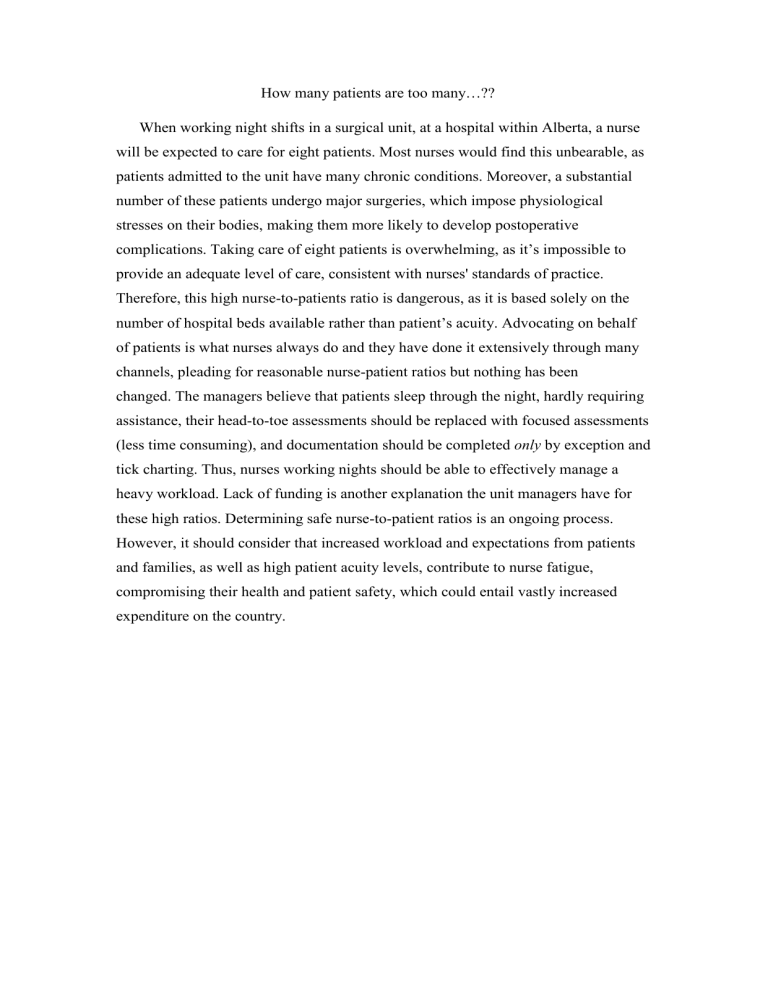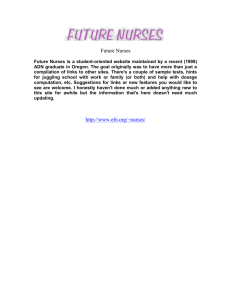
How many patients are too many…?? When working night shifts in a surgical unit, at a hospital within Alberta, a nurse will be expected to care for eight patients. Most nurses would find this unbearable, as patients admitted to the unit have many chronic conditions. Moreover, a substantial number of these patients undergo major surgeries, which impose physiological stresses on their bodies, making them more likely to develop postoperative complications. Taking care of eight patients is overwhelming, as it’s impossible to provide an adequate level of care, consistent with nurses' standards of practice. Therefore, this high nurse-to-patients ratio is dangerous, as it is based solely on the number of hospital beds available rather than patient’s acuity. Advocating on behalf of patients is what nurses always do and they have done it extensively through many channels, pleading for reasonable nurse-patient ratios but nothing has been changed. The managers believe that patients sleep through the night, hardly requiring assistance, their head-to-toe assessments should be replaced with focused assessments (less time consuming), and documentation should be completed only by exception and tick charting. Thus, nurses working nights should be able to effectively manage a heavy workload. Lack of funding is another explanation the unit managers have for these high ratios. Determining safe nurse-to-patient ratios is an ongoing process. However, it should consider that increased workload and expectations from patients and families, as well as high patient acuity levels, contribute to nurse fatigue, compromising their health and patient safety, which could entail vastly increased expenditure on the country.



